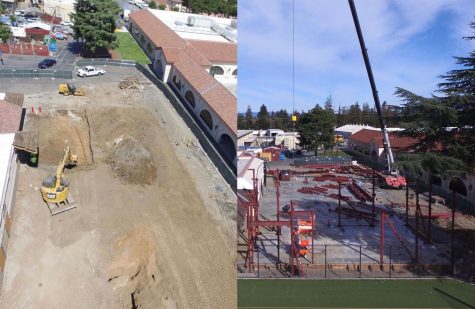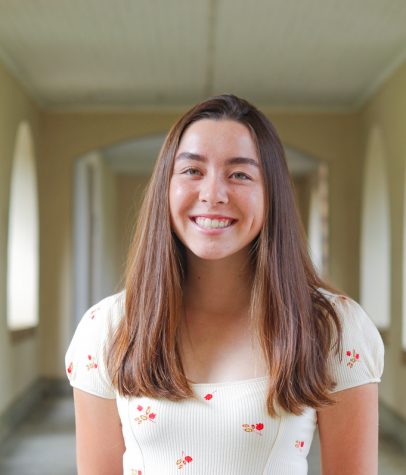Science building construction continues despite school closure
April 30, 2020

Amid school closures and the shutdown of non-essential businesses throughout the state of California, construction is continuing on Palo Alto High School’s science wing, which students and staff alike can look forward to using as early as next fall.
According to Assistant Principal Jerry Berkson, despite the shutdown of Palo Alto Unified School District schools, the original timeline for construction is still intact, which puts the finish date around November 2020.
“Construction is continuing,” Berkson stated in a message to The Paly Voice. “Looking at November as of now, although that is still a fluid date.”
According to Berkson, construction may even be done slightly ahead of schedule.
“We could be done a bit sooner as the shut down of the school has allowed them to work on areas that they would not have access to during a “regular” school year,” Berkson stated.
The construction, which began last summer, will expand the current science wing with the addition of four new classrooms on the southeast side of the building. The expansion is intended to provide science classes previously held in portables with the resources and facilities to conduct experiments.
Yet to be determined, however, are key choices for the interior designs of the classrooms. Science teacher and Instructional Lead Erik Olah said it is likely that the new additions will appear slightly different than the existing science classrooms.
“The rooms will be like most of the science rooms in that they’ll have… those lab bench areas around the side,” Olah said. “But for furniture, it’s like what tables or desks or what configuration we want it to look like.”
Olah said that there’s room for improvement on the existing science tabletops, some of which present maneuverability challenges.
“Those big giant science tables are hard to move,” Olah said. “If you have, unfortunately, a Code Red or something, and you try to tip the tables, you end up breaking [things], and they’re heavy, so we’re trying to get something that’s a little more manageable for the rooms.”
Other decisions, like what types of technology will be included in the classrooms, also have yet to be made.
“We’re also still working out whether we’re going to use projectors in those rooms, or those… really big TV monitors, we’re hoping we get those,” Olah said.


